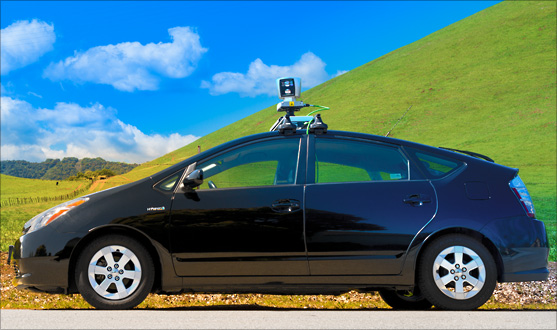New GM Woods discusses view of the market
MORGAN HILL, Calif. – Velodyne has had an active month. After bringing on board four new members to its executive team in early August, the company then announced an exclusive deal with Caterpillar, which will use Velodyne’s lidar sensors to promote situational awareness with its mining- and construction-oriented vehicles.
Among the new hires is Stuart Woods, who’ll serve as VP and general manager, and who will oversee the lidar division of the company. (Velodyne also makes high-end audio equipment, but the two halves of the business are almost completely unrelated.)
Woods has a business management background, with technology experience that ranges from the networking business at Cisco to SPI Lasers. As he enters now the lidar industry, what is his impression of the business and Velodyne’s role in it?
“The lidar market is maturing quickly,” Woods said, speaking over the phone from his office in Morgan Hill. “And we continue to have, probably, the most-adopted high-definition lidar sensor on the market, particularly for mobile applications. We’ll continue to support and grow the mapping market and the autonomous vehicle market, both in civilian and military use.”
Part of that support and growth comes with the Caterpillar deal, which Woods said was a top priority when he came on board at Velodyne. “It’s been a developing relationship that goes back years,” Woods said. “There was a lot of cross-pollination that went on across multiple groups … We were lucky to have grown up together a bit as it relates to the autonomous vehicle world.”
“We were comfortable with them and they with us,” Woods said, “and when I came on board, with my background in business management, it was more in my nature to sit down with them and come to a more formal agreement.”
He called the deal with Caterpillar, which is only exclusive for vehicles intended for mining, earth-moving, construction, quarry and aggregate work, and worksite planning, “an endorsement in a very big way in a direction that I’m excited about.” He said to be on the lookout for major announcements from Caterpillar in the near future about how they intend to apply the technology.
As for the exclusive nature of the deal, Woods reckons, “if you’re going to market, it’s nice to go to market with a market leader.”
In terms of product releases, the HDL-64 lidar sensor remains the company’s flagship, but Woods said the company would soon be releasing a 2.0 version of the software supporting the HDL-32. He said the software upgrade would provide much better calibration abilities, and increase the options available to users who don’t need the resolution of the 64, or are maybe looking for a less expensive option.
Further, Woods said he’s very interested in the open source movement in the 3D data capture space, and that he intended to work closely with the Point Cloud Library. “It’s our intention to release our viewer as an open source product,” he said, “and launch a wiki environment and make that available to users. We’ll also be making available some packet streamers that allow you to interact with other viewers.”
This open source movement is important, Woods said, because “as we start to look at how we can collectively grow the 3D market, the concept of engaging and supporting open source is certainly a way to enable new applications that I can’t even think of right now, and I would encourage my competitors as well to think about how they can help that process … We need to help innovators come up with those new ideas.”
Woods believes multiple data formats are holding the industry back, and is encouraged by the E57 standard format, though Velodyne’s sensors don’t yet export in E57. “I think it has the right legs,” he said, “but there are some things we need to work out, particularly, for example, in the area of compression.”
And new markets still abound. Woods said, as the company moves forward, “we’re looking increasingly to higher point-volume applications, or any situations that require a real-time understanding of one environment – whether that’s security or intersections or some other application where a camera is not really the answer anymore.”






